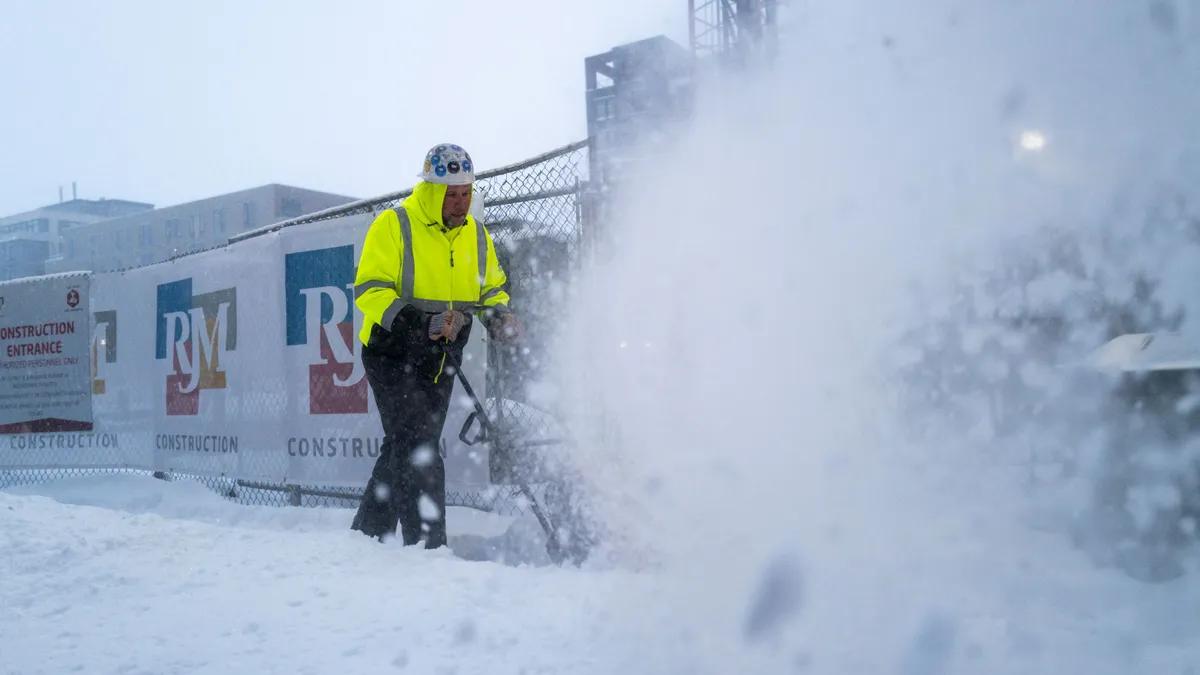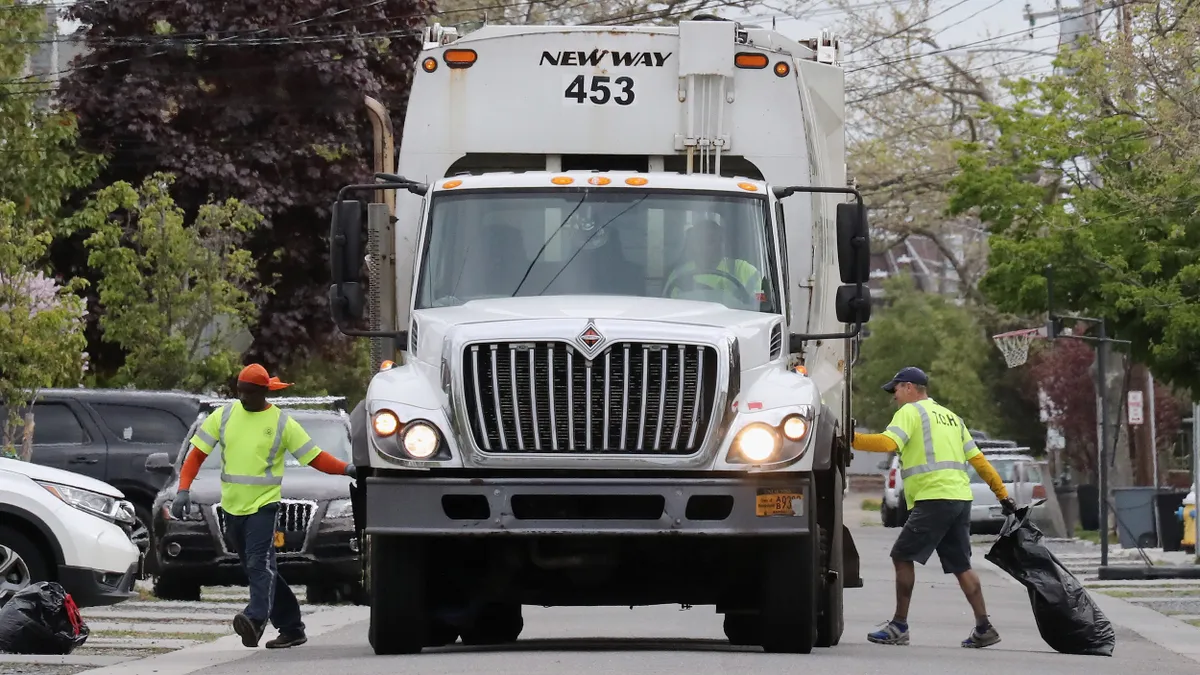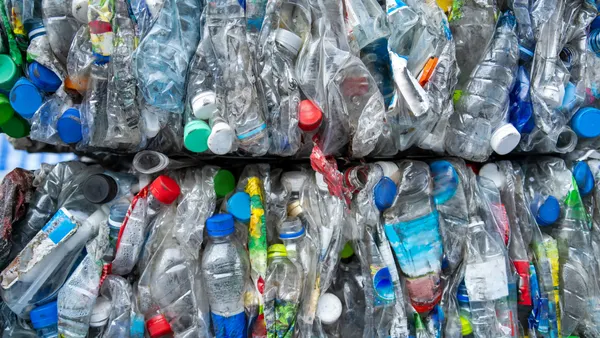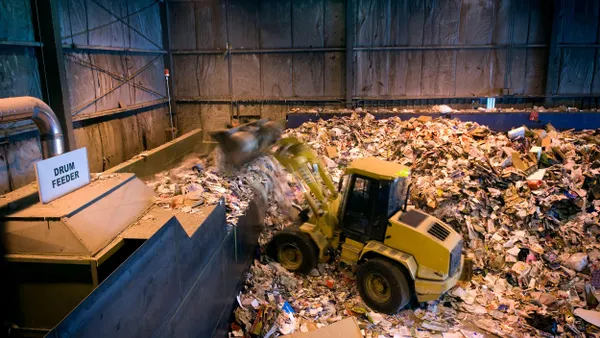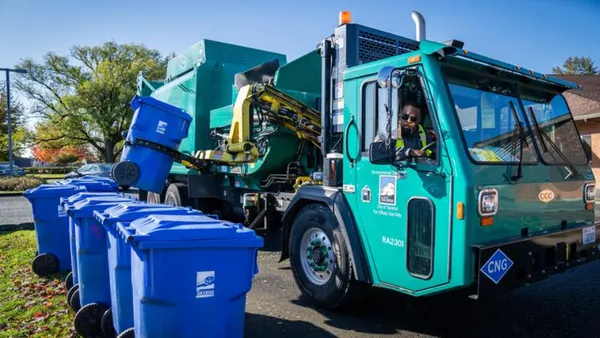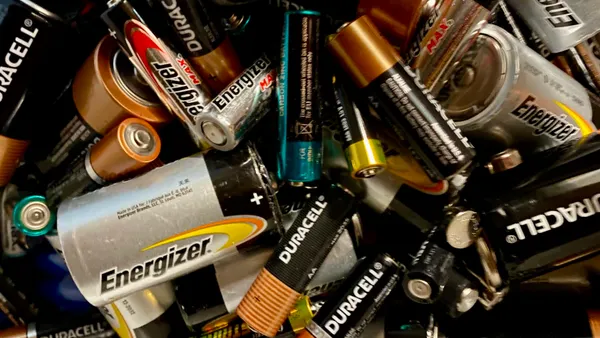Dive Brief:
- Battery stewardship and collection organization Call2Recycle has introduced a new drop-off program specifically for high-energy batteries used in certain outdoor power tools and equipment.
- Consumers can now drop off eligible batteries over 300 watt hours at about 1,800 retail locations. Such batteries are becoming more common in consumer power tools, such as lawnmowers and snowblowers, but have few accessible recycling outlets, Call2Recycle said. The organization partnered with the Outdoor Power Equipment Institute and the Power Tool Institute on the project.
- The new program, funded by equipment manufacturers, also provides training for employees at drop-off sites. Such batteries have historically faced collection and transport hurdles because they require special training to ship due to their size and wattage.
Dive Insight:
The recycling industry has long looked for ways to make battery collection easier and safer in order to prevent MRF and vehicle fires, especially as more kinds of batteries enter the market and reach end of life. Call2Recycle sees the high-energy collection program as a way to fill a collection gap for a challenging battery format, which many consumers were already attempting to put in curbside bins or drop off at retail locations along with smaller batteries.
“These [medium-format] batteries are now mainstream,” said Todd Ellis, vice president of services and solutions at Call2Recycle. “Retailers were saying, ‘We're getting these batteries back. How do we get them out of our stores in a safe and compliant manner?”
Equipment manufacturers Chervon, Husqvarna, Makita, Stanley Black & Decker, Stihl, Techtronic Industries and The Toro Co. fund the drop-off program, and Call2Recycle aims to get more manufacturers involved in the future.
The program also aims to shore up battery collection infrastructure in advance of new state laws that the industry expects will bring more batteries into the recycling stream, Ellis said. In 2026, Illinois and Vermont will implement battery EPR programs that will encompass these kinds of medium-format batteries. Waste groups like the National Waste and Recycling Association have supported such legislation as a way to more responsibly manage such materials.
High-energy batteries come with unique collection considerations because of their shipping classification under the U.S. Department of Transportation, Ellis said.
“Once you get above 300 watt hours, it changes the shipping classification, and it actually requires the shipper to be hazardous material trained,” he said. “Not every retail location has someone who is hazardous material trained, and that training is expensive. It was a real struggle within the industry to kind of find the solution for this.”
After working with DOT on the issue, Call2Recycle received a special permit allowing the organization to provide retailers with a specific battery collection kit and tailored training on how to package the batteries for shipping. This allows employees at drop-off locations to ship batteries for recycling without needing hazardous material training.
Ellis expects the program will funnel more medium-format batteries to downstream battery recyclers, most of which already have experience recycling both smaller and larger sizes.
Call2Recycle aims to expand the number of locations that will accept these kinds of batteries and envisions working both with retailers and haulers on awareness campaigns.
“When we ask people where they like to get battery recycling information, a lot of them are turning to their waste haulers, so I think there's a great opportunity for some collaboration in that area,” he said.



